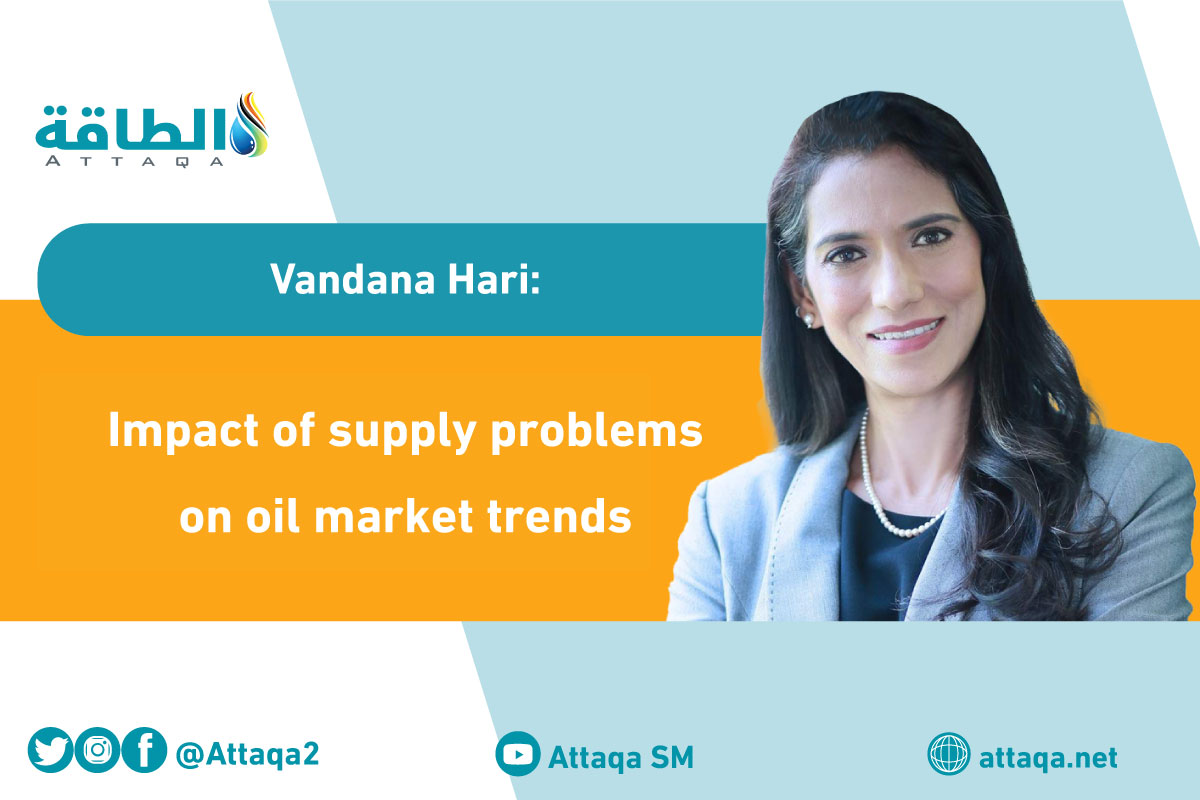Supply troubles may continue to keep crude out of bear territory (Article)
Vandana Hari*

Crude continued to converge with the recessionary fears rippling through the broader financial markets last week, with a sell-off on Tuesday and Wednesday hammering prices down to three-month lows.
Brent and WTI futures were in bear territory for a day, before being pulled out of it by a price rebound on Thursday, which continued into Friday.
On balance, the week saw a steep drop in prices followed by a modest recovery, which left Brent and WTI futures with net losses of 4% and 3% respectively.
The latest course correction in a commodity that was stuck in a relentless rally mode for the past four months was prompted by a souring demand outlook.
But this is only the start of a rebalancing phase. We need to zoom out a bit to take in the full picture.
Don’t extrapolate from a place of fear
We should not deduce the future from one or two bouts of panic sell-off in crude.
The slump — especially on Tuesday, when Brent futures recorded their third-largest drop in absolute terms in a 34-year history — was likely worsened by thin trading volumes, a feature of the market over the past few months. Maybe it was precipitated by a few players taking some large hedging positions. Perhaps it was accelerated by technical selling.
In the big scheme of things, the reasons don’t matter. What is key is that at this stage, dumping crude futures over a fluid and murky expectation of demand destruction at some point in the future is a highly speculative move.

The financial markets haven’t found a consensus on whether there will be a recession in the US and if there is one, how far down the road it might and how long and deep it might go. It is also not a given that a recession in the US, Europe and Russia will drag down other major developing economies and big consumers of oil, such as China and India.
Yes, a slew of macro-economic data in recent weeks has been pointing to slowing economic activity around the world and shaky consumer confidence.
US gasoline and distillate demand is running 5% below year-ago levels. Overall fuel demand in the world’s largest consumer is a substantial 1.9 million b/d below the year’s peak hit in early February.
Airline flights in Europe are running nearly 13% below corresponding 2019 levels in the midst of the peak summer holiday season,
China, world’s second-largest oil consumer after the US, is caught in rolling Covid lockdowns across the country that are keeping a lid on economic activity and curbing travel.
Anecdotal evidence continues to emerge from across the world that stubborn, high inflation is starting to put the brakes on consumer spending.
For much of the second quarter, global oil demand recovery was sustained by the release of pent-up demand for travel, tourism and leisure activities. Some of the impact of high pump prices was offset by governments across the developed and developing world shielding end-users through tax cuts, price caps or other forms of price subsidies.
This demand momentum may be exhausted and may vanish before the end of the northern hemisphere summer holiday season.
But oil demand “destruction” in the next few months is far from a certainty.
Besides, the fear and risk aversion that dominated oil sentiment last week pushed aside supply concerns, but that doesn’t mean they are gone.
Supply issues cannot be discounted
The troika of tight global supply-demand balance, thin spare capacity in the upstream as well as downstream sectors, and risks of disruption looming over gas, crude, and refined products supply complicates the recalibration of crude prices even if one subscribes to the narrative of an impending demand bust.
It means crude prices cannot simply hurtle down a slope just yet, unless, perhaps, a global recession comes clearly into view.
A court in Novorossiysk, Russia, last Wednesday ordered the Caspian Pipeline Consortium to suspend crude loadings for 30 days as punishment for violating its oil-spill prevention plan.
CPC, which loads around 1 million b/d of Kazakh crude for the export markets from a terminal in the Black Sea port of Novorossiysk, said it did not immediately have details on when the suspension would have to start, but it had appealed against the court ruling.
Elsewhere, Libyan crude production and exports have dropped to about a third of normal volumes since end-June amid continuing blockades.
Output from the 10 OPEC members bound by quotas and their nine non-OPEC allies fell short of the collective target by about 2.7 million b/d in June, according to a Platts survey.
Meanwhile, the gas and power crisis in Europe continues to worsen. Benchmark European natural gas prices held up near four-month highs last week, while electricity prices hit all-time records.
Gas shortages in the continent could progressively worsen going into the winter high-demand season, especially if Russia continues to throttle back supply.
Even as European countries prepare for emergency measures including gas and power rationing, they are also falling back on coal and could turn to diesel for power generation. This could boost oil demand as replacement fuel, especially if prices remain well below the peaks of the first half of 2022.
Vandana Hari is Founder and CEO of Vanda Insights, which provides macro-analysis of the global oil markets.
READ MORE..
- Deceptive Solutions for Fossil Fuel Dependence Drive Prices Higher (Article)
- Deceptive Solutions for Fossil Fuel Dependence Drive Prices Higher (Article)
- The Biden Administration’s policies have pushed gasoline prices higher (Article)
- (Article) The Top 5 Reasons Behind Fruitless Energy Policies
- The Biden Administration’s policies have pushed gasoline prices higher (Article)








